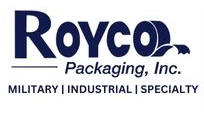Did you know that the cost of metal corrosion to the world economy is over $2.5 trillion annually? Consider giving this some thought if you are employed in the field of metal fabrication or in any other business that is responsible for the production of metal goods. Corrosion can have an effect on your business's bottom line by increasing the expenses of your operations. This post will guide you through an understanding of why corrosion protection is necessary, the conventional methods, identifying the right anti-corrosion packaging and choosing the perfect option for your products.

Know the Conventional Corrosion Protection Methods
Previously, the only way to safeguard metal from corrosion was to coat it with something that would prevent it from being exposed to air. This was the only method that was known at the time. It has been known for a long time that painting metal is an effective method to prevent corrosion. In addition, in order to keep the metal in excellent condition and protect it from corrosion, it is sometimes packed with a thin coating of grease or oil.
On the other hand, these time-honored protection methods might not always be the most effective. They can be expensive, require additional expenditure and substantial amounts of time, and require extensive cleaning efforts on the receiving end. In addition, they are not always possible; for instance, transporting an engine with all the metal surfaces painted would lead to problems when the engine is installed in a vehicle; this would be an impractical solution. Now that the times have changed and since there is a global shift in industrialization, modern techniques of corrosion protection have evolved.
Identify Your Need for Anti-Corrosion Packaging
Ask yourself this question before you choose a method. The handling, storing, and shipping of goods all present significant opportunities for corrosion to occur. Uncoated metal components rust quickly. Corrosion can be caused by a number of factors, including fluctuations in temperature, polluted air, salt from the water, and moisture. Corrosion protection is required for all goods that contain bare metal, such as bearings, engines, parts, and electronic devices. The loading, unloading, manipulation, warehousing, and control of goods that are in the process of being shipped is a complicated process. There are a great number of factors that can have an effect on corrosion. Reaching the end user without any issues requires the utmost care and attention.
In most cases, you need anti-corrosion packaging if you are engaged in any of the following activities:
- Transporting or exporting products, particularly via water or in environments susceptible to moisture
- Keeping metallic products in storage for prolonged amounts of time
- Manufacturing corrosive-vulnerable forms of metal products
- Sending any components that have not been installed
If you are engaged in any of the above, you should seriously consider protecting your products with anti-corrosion packaging.
Choosing the Perfect Anti-Corrosion Packaging
There are many different factors that can determine the corrosion protection packaging that you use. You should take into consideration a number of factors, including the amount of time needed for shipping, the technique used, and the atmosphere in which your goods will be kept. These three are the most common anti-corrosion techniques used in packaging and shipping.
- VCI Containers
Volatile Corrosion Inhibitor, more commonly referred to as VCI packaging, refers to any product that has been impregnated with specific chemicals to shield untreated non-ferrous metals from corrosion. VCI packaging most often takes the form of wrapping paper or emitter disks containing special anti-corrosion compounds.
The application of these specialized chemicals to your metal goods will result in the formation of a moisture-resistant layer that will prevent the metal from corroding. VCI papers and films are a tried-and-true method of packaging that is an excellent choice for those who work in the automotive or steel sectors.
- Barrier Foil
Using very thin layers of aluminum, barrier foil creates a protective atmosphere around your goods, limiting the amount of moisture and chemicals that can come into contact with them and damage them.
You can get barrier foil in the form of bags, wraps, or liners. Bags are an excellent choice for transporting small metal components or other goods through environments where there is a high likelihood of moisture. Liners can be used to secure containers that are being used to store corrosive chemicals, paints, oils, or liquids in order to reduce the amount of product waste and the need for replacements.
- Desiccants
The use of desiccants is one of the most prevalent methods used to combat corrosion; in fact, you may have already come across these substances. Have you ever received a product with a sachet of silica gel inside? Its sole purpose is to soak up wetness!
Desiccants are chemicals that absorb moisture, and since moisture is your enemy when it comes to corrosion, using desiccants, which are chemicals that do the opposite, can be an effective way for you to combat corrosion. Silica and clay are two common types of desiccants that are used in commercial and household settings.
Contact an experienced packaging solutions specialist at Royco Packaging if you require assistance with the packaging of corrosion prone materials.

